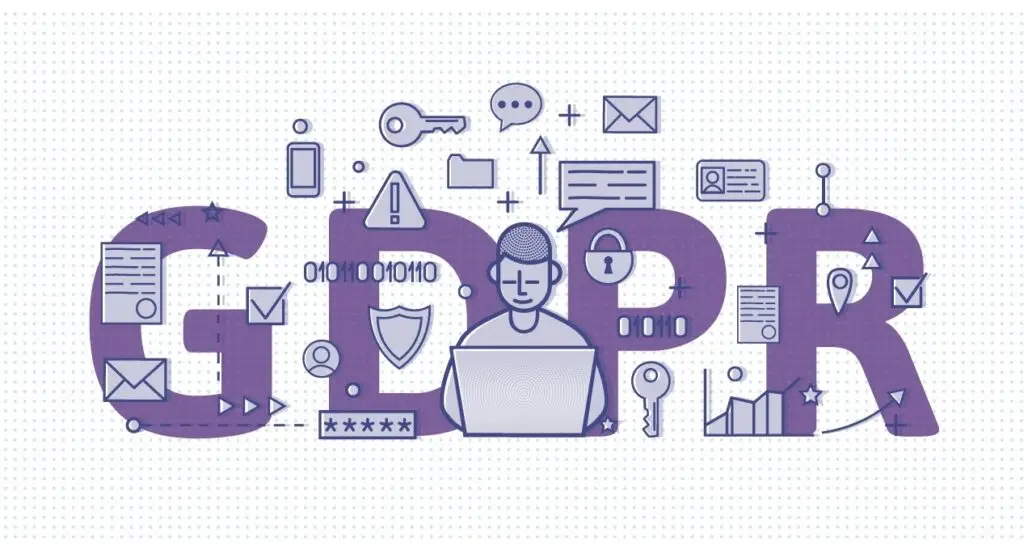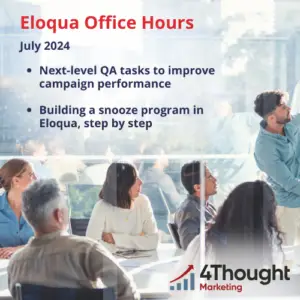
The General Data Protection Regulation (GDPR) changed everything in marketing.
You have to reinvent your entire marketing program.
Not so fast.
Yes, you need to make changes. Your approach to privacy and data protection needs to change. Despite these changes, marketing fundamentals remain critical. Let’s focus on one practice in particular: making offers.
How do you continue to make effective offers in a GDPR world? The first step lies in understanding the “legitimate interest” principle in GDPR.
A Quick Refresher On GDPR
Under GDPR, there are six lawful reasons to process personal data. Without one of those lawful reasons, you should not process data such as email addresses, phone numbers and other protected information. Processing data generally includes using almost any kind of marketing automation product or process.
Of the six lawful reasons to process data, legitimate interest is the most significant for marketers. When a customer raises their hand to express interest in your company in a lead generation offer, you can process their data to respond to their interest.
The European Commission provides the following overview of legitimate interest:
“Your company/ organization has a legitimate interest when the processing takes place within a client relationship, when it processes personal data for direct marketing purposes, to prevent fraud or to ensure the network and information security of your IT systems.”
How does this work when you have complex marketing campaigns? Does a prospect signing up for a white paper mean they have demonstrated “legitimate interest” to be called weekly for the next two years? Traditional marketing would say yes. Our view of GDPR would say “probably not.”
While we cannot offer legal advice on GDPR compliance, we can discuss ways to reduce risk while pursuing marketing goals. Instead of the generalist approach where one signup means you have a blank check to contact that person, take a different approach. Use multiple lead generation offers and embedded offers to generate segmented legitimate interest for different products, services and types of interaction.
The Return of Offers In a Post GDPR World
In the early years of email marketing, you could publish a landing page, collect emails and market everything to that list.
That`s no longer going to cut it in the post GDPR world. How can you show that consenting to receive a newsletter automatically means consenting to receive webinar invitations, calls and more? Instead of facing such questions, you can avoid them altogether by generating more targeted legitimate interest..
There are two ways to deploy your offers to increase GDPR compliance. First, you can make more list building offers on your website. For example, you may offer content upgrades on popular blog posts. Second, embed new offers in other offers (e.g. a newsletter includes an offer to register for a webinar). .
Increase Segmentation By Making More Offers
To illustrate this concept, consider the offers a business intelligence software could make. The target market is managers of analytics departments in large companies. The company’s list of marketing offers might include the following:
- Cheat Sheet: How To Package BI Data For
Executive Presentations In 3 Steps (Awareness Level). You could deploy this
offer on the homepage of your website.
- Webinar: The 5 Best Questions To Ask Before You Fund A BI Project. (This offer would be embedded in the cheat sheet resource)
- Content Upgrade: The Top 15 BI Tools, Ranked
[Infographic]
- Ebook: How To Assess Business Intelligence Maturity In 30 Minutes. (This offer would be embedded in the content upgrade.
- Excel Template: Your Buying Due Diligence
Spreadsheet for Business Intelligence
- Cheat Sheet. BI Data Self-Diagnostic In 10 Questions. (The offer to sign up for this offer would be embedded in the email copy delivering the Excel template).
Each of these offers allows you to generate a different kind of legitimate interest from your prospects. With each offer, you will be within your GDPR rights to deliver the asset and follow up about it to a reasonable degree.
Segmentation Tip: What if the same lead opts in for multiple offers? That’s good news. If a lead has requested three lead building offers, they will probably not be offended if you reach out to them directly for a demo or a call.
Offers Within Offers: Eliminate Your Marketing Dead Ends
Picture this: you publish a new offer and drive traffic to it. Prospects download the offer, and then engagement falls off. What should you do next? The traditional playbook would recommend following up constantly until you get a response. Wait!
Before you send that email blast, remember legitimate interest. The lead may not have consented to receive general marketing communications. You run a risk of violating GDPR expectations if you stretch that one expression of legitimate interest to the breaking point. At the same time, you don’t want to have marketing dead ends where those leads never engage with you again.
What’s the solution? You need to rebuild your offers so that one offer always has one other offer embedded in it.
Embedding offers inside other offers and content helps you to stay GDPR compliant. For example, if we made an offer to sign up for one of our webinars in an ebook, that would be an embedded offer. At the end of that webinar, there might be another offer to sign up for a GDPR checklist. In each step, you are demonstrating interest. You still need to remain mindful about making too many offers and make sure that you deliver on what you promise.
When To Use Which Kind of Offer?
To continue with the business intelligence example from above, here are some further offer ideas to consider.
- Content Offer. Offer additional content that moves the prospect closer to buying. For example, offer a resource that shows them how to create a business case for business intelligence.
- Demo Invitation. Invite the prospect to see the product in action. Best suited for highly engaged leads.
- Strategy Session Call. This offer may be better suited if you are promoting training or professional services.
- General Marketing Offer. This is “Plan B” and will generally be more difficult. You are asking a prospect to raise their hand for any marketing you have to share. A long disclaimer message on the opt-in page would be one way to execute this approach.
Tip: Apply what you’ve read about embedding offers. How could pick two of the offers from the list above and brainstorm a few ways you could connect them together?
Of Course, We’ll Conclude With An Offer For You Naturally, we are going to end this post with an offer for you. As an Eloqua user, you probably have dozens or more offers in place already and many list segments. Are those offers structured to work in a post GDPR marketing world? Find out by requesting a GDPR marketing assessment now.


